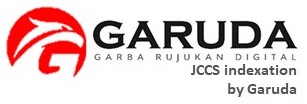Characterization of Pig, Cow and Goat Raw Skin Using E-Nose for Visual Data Comparison of Characteristics of Halal Skin-Processed Products
DOI:
https://doi.org/10.24036/jccs/Vol1-iss1/8Keywords:
Halal, electronic nose, chemometrics, linear discriminant analysis, characteristic visual dataAbstract
The presence of questionable halal claims for various products in the market presents concerns among consumers, particularly Muslims. As a result, the need to accurately identify halal skin products has become crucial. This study focuses on differentiating pig skin from other commonly used raw materials such as cow skin and goat skin by utilizing visual characteristic data. The data was obtained through the analysis of samples using a chemometric-based electronic nose instrument, which detected volatile organic compounds (VOCs) through metal oxide semiconductor sensors (TGS 26xx and TGS8xx). The samples consisted of pig skin, cow skin, and goat skin, and their specific odors were measured and represented in line graphs, revealing distinct odor patterns detected by the sensors. The analysis revealed that pig skin exhibited the highest and increasing trend line, indicating a higher concentration of VOCs and an intense odor. Cow skin displayed a moderate trend line with lower concentrations of VOCs, while goat skin showed a lower trend line compared to cow skin but possessed strong odor properties. The analysis employed the linear discriminant analysis (LDA) method, which further confirmed these characteristics by generating line graphs that demonstrated significant differences, particularly in pig skin. The LDA plot graphs presented clear groupings of the original pig skin, cow skin, and goat skin data. Discriminant function 1 accounted for 89.13% of the grouping, while discriminant function 2 accounted for 10.87%, resulting in a total value of 100% for the discriminant function. In conclusion, this research establishes a clear distinction between pig skin and cow/goat skin based on their odor characteristics and sensor data. The LDA plot graphs serve as a valuable visual tool for identifying the characteristics of halal products. By utilizing this approach, consumers, especially those seeking halal-certified skin products, can make informed choices and have greater confidence in their purchasing decisions.
Downloads
Published
Versions
- 2023-07-26 (2)
- 2023-05-31 (1)










